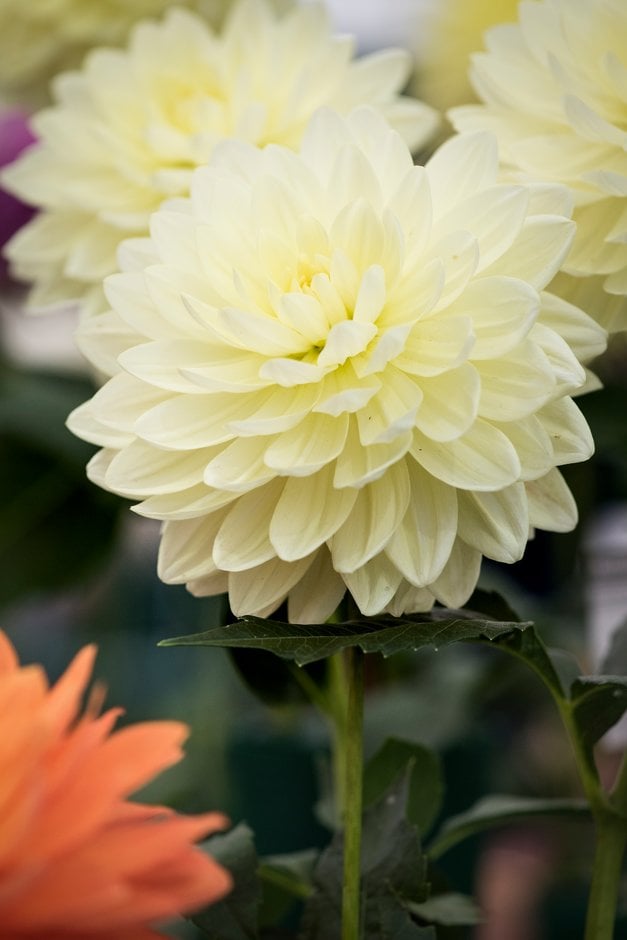Size
Ultimate height
1–1.5 metresTime to ultimate height
1–2 yearsUltimate spread
0.1–0.5 metresGrowing conditions
Moisture
Moist but well–drainedpH
Acid, Alkaline, NeutralColour & scent
| Stem | Flower | Foliage | Fruit | |
| Spring | Green | |||
|---|---|---|---|---|
| Summer | Cream Yellow | Green | ||
| Autumn | Cream Yellow | Green | ||
| Winter |
Position
- Full sun
Aspect
South–facing or East–facing or West–facing
Exposure
Sheltered Hardiness
H3Botanical details
- Family
- Asteraceae
- Native to GB / Ireland
- No
- Foliage
- Deciduous
- Habit
- Columnar upright
- Genus
Dahlia are tuberous rooted perennials with pinnately divided leaves and showy flowerheads, double in many cultivars, in summer and autumn
- Name status
Not established
- Horticultural Group
- Waterlily dahlias have double or semi-double flowerheads, with relatively few broad rays, forming a rather flattened flowerhead
How to grow
Cultivation
Grow in fertile, humus-rich, well-drained soil, enriched with organic matter and general purpose fertiliser, in full sun. Pinch out growing tips to encourage bushy plants and stake (see staking perennials). Water freely in dry periods. Lift and store tubers in autumn to replant or use as a source of cuttings in spring. See dahlia cultivation
Propagation
Propagate by softwood cuttings taken in spring from shoots from stored tubers, or divide the tubers ensuring each division has a viable bud
Suggested planting locations and garden types
- Cottage and informal garden
- City and courtyard gardens
- Patio and container plants
- Cut flowers
- Flower borders and beds
- Bedding
Pruning
Deadhead to prolong flowering. Cut back to near ground level in the autumn, before lifting and storing for the winter or mulching in milder locations
Pests
May be susceptible to aphids, capsid bug, earwigs, caterpillars and glasshouse red spider mite
Diseases
May be affected by a virus, tubers may rot in store
Get involved
The Royal Horticultural Society is the UK’s leading gardening charity. We aim to enrich everyone’s life through plants, and make the UK a greener and more beautiful place.
